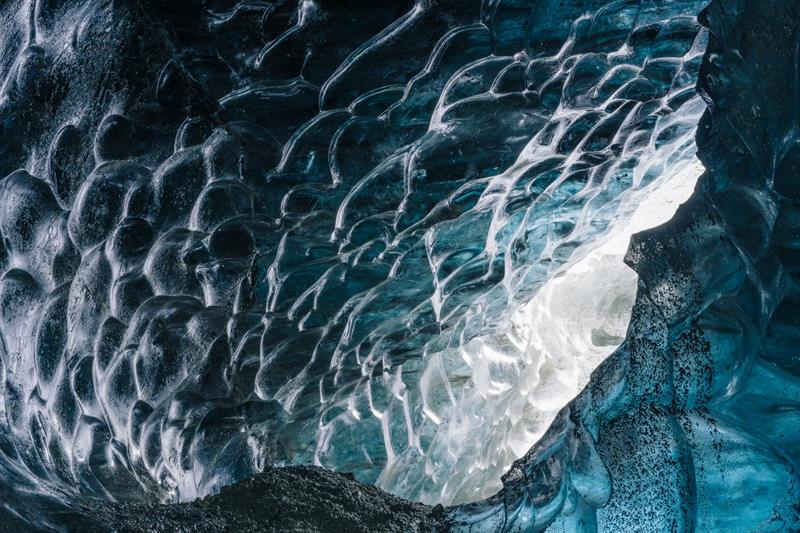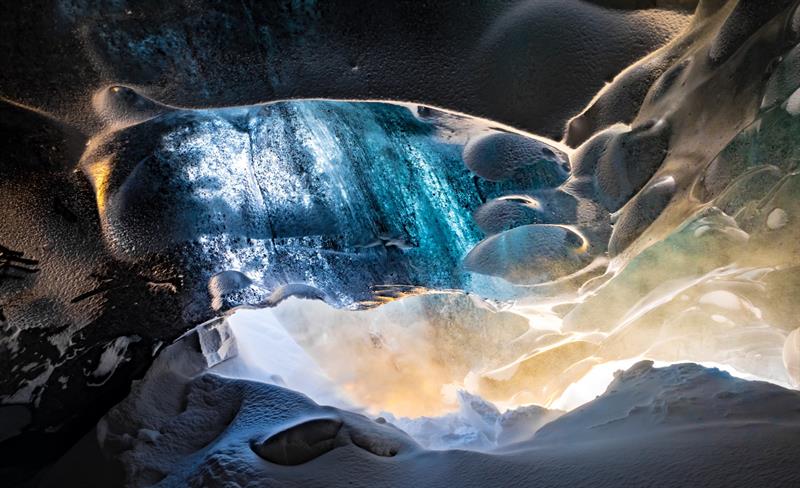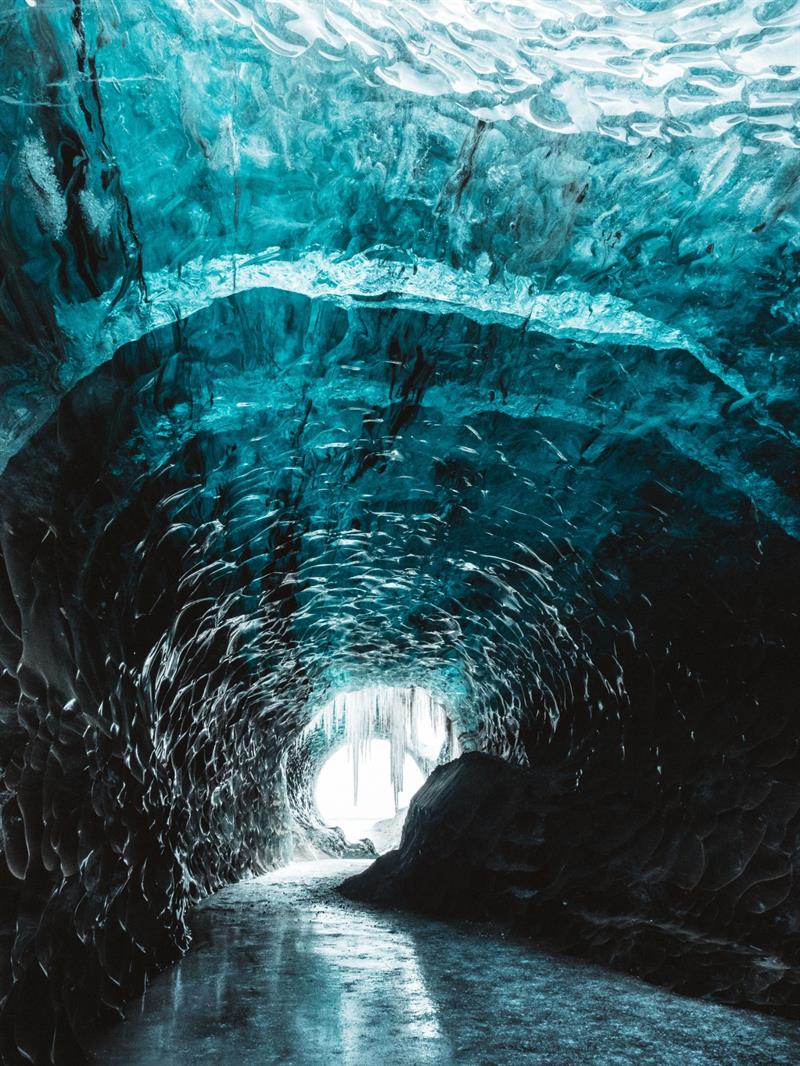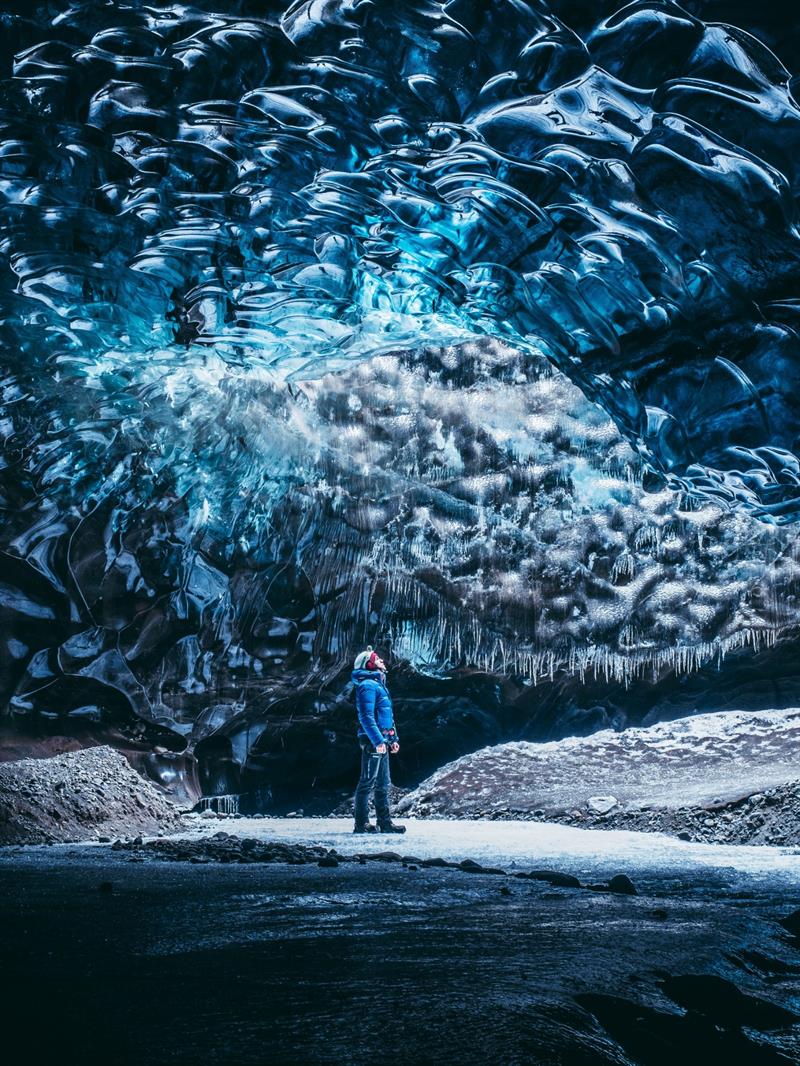In the middle of winter, in the seemingly white immensity, who could guess the Icelandic glaciers shelter fragile crystal blue cathedrals and translucent ceilings? Although often referred to as ice caves by travellers and locals alike, a more accurate term would be glacier caves as these are entirely formed from glacier ice. Their ephemeral character and vivid hues of blue make the ice caves a place for the most fortunate, ensuring lasting memories. New Year's resolution? Take advantage of this short window of time that is winter, and step into an ice cave! Did you just hear the ice cracking? It’s just the glacier shifting…
When is the best time to visit ice caves ?

Ice caves are usually open to visitors from mid-November to mid-March, when prolonged freezing temps make the ice caves stable enough and safe to explore. Outside of the opening season, the ice caves are too unstable, and it is impossible to visit them. Always put safety first and go under professional guidance only. Glaciers are mesmerizing but remain a moving natural phenomenon, and can be deadly too! An alternative to natural sculpted ice caves, is the man-made ice tunnel in Langjökull Glacier, open all year around, which invites you to literally stand inside a glacier, and feel it all around you.
How are ice caves formed ?

From a scientific perspective, ice caves in Iceland are brought to us by the action of surface meltwater drainage and subglacial flows caused by geothermal activity. For the latter, the most remarkable example is the remote ice cave located in Kverkfjöll, where a hot river flows beneath a glacial cave. For most of the others, the warmer temperatures of the Summer melt the ice at the surface of the glacier, that eventually drains down all the way to the bottom of the glacier through crevasses and moulins, while the glacial streams and rivers leave behind caverns or passageways within the glacier. Voilà!
The short-lived nature of ice caves makes their sight even more precious and one must take time to appreciate them. Although the ice caves are relatively stable in winter, they remain subject to natural forces, stalactites, stalagmites as well as other fabulous ice formations showing up, and colours and textures changing with the light and temperatures.
The most important changes occur during Spring and Winter when older ice caves erode, crack or even collapse, leaving place to new, fresh ones that the frosts of winter will stabilize. Some caves form in more or less the same location every year, but none remains exactly the same. It’s simple, you cannot visit twice the same ice cave.
Why so blue?

Not only ice caves vary in sizes, some being quite claustrophobic while others could easily fit 100 people at the same time, but also in colour, from crystal clear ice to more opaque and solid-looking blue ice.
The blue caves provide an inspiring palette of blues tones varying with the seasons. As the glacier is compressed beneath its own weight for thousands of years, and travels further away from the sunlight, air bubbles are forced out and ice crystals become vividly blue. Often, algae get trapped within the ice, naturally enhancing the colours and textures.
Sometimes, large stretches of crystal ice form in the cavern, giving a fascinating impression of glass-ceiling, the light penetrating through the blue ice making them look like crystals.
Where to go ice caving ?

VATNAJÖKULL
Being the biggest glacier in Iceland, also the 2nd largest in Europe, covering 8,100 square kilometers with an average ice thickness of more than 900 metres (up to 1.000 metres in some places!), Vatnajökull Glacier boasts some of the best and most diverse glacier activities and could easily keep you occupied for your entire stay in Iceland. This results in the creation of breathtaking ice caves every winter. You can easily access the Vatnajökull National Park by driving East along the South Coast for about 5 hours, although the drive might be slightly longer depending on winter road conditions. We would recommend to spend a night in the area to enjoy the region’s treasures at a relaxed pace.
The ice caves are an extremely popular activity so make sure to book your seat quickly and get back to us with pictures of your experience! Below are some of the best tours to join to see ice caves in Vatnajökull:
LANGJÖKULL MAN-MADE ICE CAVE
Stepping into Langjökull tunnel is an experience of a kind, truly indescribable, that starts with an epic drive high up to the glacier aboard a monster truck. From the top, a priceless view over the white vastness of the glacier and its surroundings. Inside, a horseshoe shaped tunnel of about 500 meters long, 5 rooms built in the icy depths including an ice bar and even a wedding chapel where you can choose to celebrate your big day and put on your fanciest... scarf? Langjökull glacier, the second largest in Iceland, is conveniently located some 3 hours NorthWest of Reykjavik, so if you are up for glacier exploration with a twist, this is for you!
Do you have your helmet and crampons on yet?!